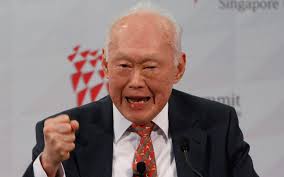Change is implemented more quickly and successfully when alternative options have been discussed in advance, and when the team as a whole has reached a consensus decision on the right way forward. Consensus also helps ensure that the people who are closest to the likely results of a decision get to make their voices heard.
‘When the action stage comes, they move like greased lightning’
Sir John Harvey-Jones, chairman of ICI from 1982-1987, worked closely with Japanese organizations and saw the benefits of their more consensual approach to decision-taking.
‘Those of us who have worked with the Japanese and who admire their business achievements, as I do, know how long it takes the Japanese to reach a decision. One is lulled into a totally false sense of security by the apparently endless debate and the thoroughness of the involvement of people at every level of the organisation in the decision, because when the action stage comes, they move like greased lightning.’
John Mackey, CEO of American natural and organic product retailer, Whole Food Market, advocates consensus decision making. ‘I almost never make a command-and-control decision’, says Mackey. ‘I make a ton of decisions where I consult with people I trust, with the people involved.’
Mackey’s National Leadership Team of 24 people often vote on decisions. Employees at every store meet monthly in search of general agreement. Even hiring decisions are made by consensus: new employees join a team for a trial period and the team votes as to whether they are employed; a two-thirds vote in favour means they get to stay. Since teams’ bonuses depend on their productivity, team members have good reason to choose their colleagues carefully.[1]
The principle of consensus-seeking is featured in The Toyota Way: a set of principles set out by the Toyota Motor Corporation in 2001 to describe the system of values that should underpin every aspect of corporate behaviour. Principle 13 talks about consensus:
Make decisions slowly by consensus, thoroughly considering all options; implement decisions rapidly (nemawashi).
Do not pick a single direction and go down that one path until you have thoroughly considered alternatives.
When you have picked, move quickly and continuously down the path. Nemawashi is the process of discussing problems and potential solutions with all of those affected, to collect their ideas and get agreement on a path forward.
This consensus process, though time-consuming, helps broaden the search for solutions, and once a decision is made, the stage is set for rapid implementation.
Genuine consensus speeds up implementation
Leaders tend to believe that their role is to consider the options, take the advice of colleagues and experts, and then make the final decision on their own.
In a consensual process, issues are debated by large sections of the organization. Likely problems, consequences and wider issues are explored in depth.
Once the organization has reached a consensus decision, the thorough understanding of the process by the team as a whole, and the prediction and avoidance of likely difficulties, greatly speeds up the process of implementation.
Options and consensus is further explored in 100 Great Leadership Ideas
[1] See Charles Fishman, ‘The Anarchist’s Cookbook’, Fast Company, July 1, 2004




